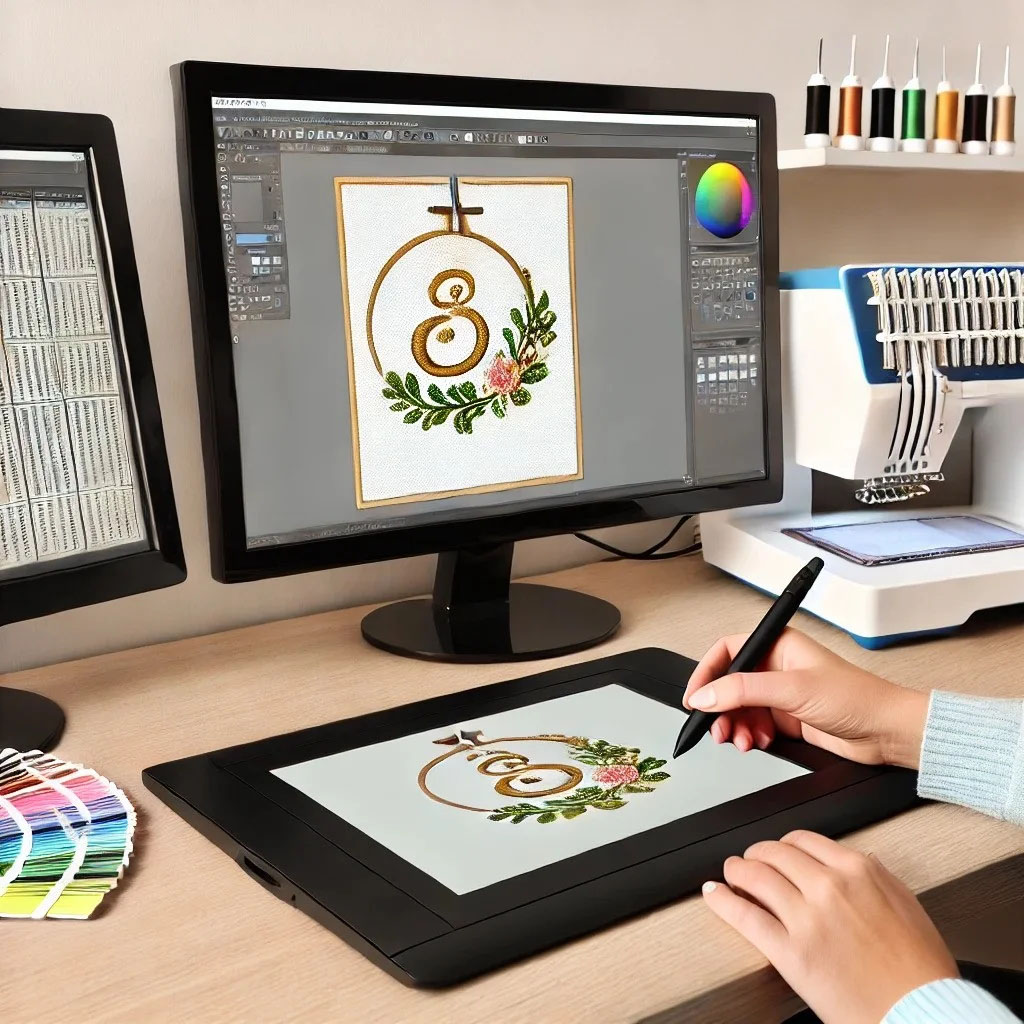
Introduction: Beyond the Stitch Count
You’ve seen it happen: a beautiful logo looks perfect on a polo shirt but becomes a puckered mess on a jacket. Or perhaps a design that stitched flawlessly on your old machine suddenly develops timing issues on your new equipment. These common frustrations highlight a crucial truth in embroidery—not all digitizing is created equal. True quality doesn’t just make your design look good today; it ensures it looks just as good years from now, regardless of what you’re stitching on. This is where understanding the value of a professional embroidery digitizing service becomes your most powerful tool for creating designs that stand the test of time.
Future-proofing your embroidery goes beyond simply creating a clean file. It’s about anticipating change—new fabrics, evolving technology, and shifting market demands—and building adaptability into every stitch. Whether you’re building a brand, preserving memories, or creating products for sale, investing in expert digitizing protects your creative investment for the long haul.
What Does “Future-Proof” Mean in Embroidery?
In the world of digitizing, future-proofing means creating designs that maintain their quality and integrity across multiple variables. Think of it like building a house with a strong foundation that can withstand different weather conditions, rather than one that only looks good on a sunny day.
A future-proof design demonstrates consistent performance when you:
Switch from cotton twill to stretchy performance fabric
Upgrade from a 15-year-old home machine to a modern industrial unit
Shift from stitching caps to jackets and back again
Run the same design five years from now on equipment that doesn’t exist today
This approach transforms digitizing from a simple conversion service into a strategic investment in your brand’s consistency and reputation.
The Pillars of Future-Proof Digitizing
1. Strategic Stitch Architecture
Amateur digitizing often focuses on simply filling spaces with stitches. Expert digitizers engineer stitch patterns that work with a fabric’s natural movement, not against it.
How professionals build better:
They map stitch directions to follow the garment’s stress points
They use composite fill patterns that distribute tension evenly
They create graduated stitch densities that prevent buckling on dense fabrics
They build in “pull compensation” that anticipates fabric distortion
This architectural approach means your design won’t pucker when you switch from heavy denim to lightweight performance wear.
2. Universal File Format Strategy
Relying solely on your current machine’s native format (like PES for Brother or JEF for Janome) creates future limitations. Professional services deliver a comprehensive format strategy.
The smart approach includes:
Primary DST files for universal industrial compatibility
Your machine’s native format for immediate use
Archival editable files (like .EMB or .PES) for future modifications
Visual references with precise color callouts and sizing specifications
This multi-format approach ensures you’re prepared for machine upgrades, outsourcing needs, or format requirements from clients and distributors.
3. Scalability Engineering
A design that looks crisp at 2 inches might become a blurred mess at 6 inches. Future-proof digitizing builds in scalability from the ground up.
Scalable designs feature:
Appropriate stitch counts that work at both small and large sizes
Clean detail separation that maintains clarity when enlarged
Simplified elements that don’t become overly complex when reduced
Tested size ranges with specific recommendations for minimum and maximum dimensions
This engineering allows you to use the same design on a hat, a jacket back, and everything between without sacrificing quality.
4. Substrate Intelligence
The best digitizers create designs that understand what they’re stitching on. They don’t just create a generic file—they optimize for your specific application.
Substrate-smart digitizing considers:
Stretch fabrics: Uses stabilizers and stitch types that move with the material
Heavy materials: Implements punchier stitch settings that penetrate deeply
Delicate fabrics: Employs lighter densities and softer transitions
Specialty items: Adapts for curved surfaces like caps or textured materials like towels
This intelligence means you get a design that performs optimally whether you’re stitching on corporate polos, team jerseys, or premium outerwear.
The Hidden Costs of Cheap Digitizing
It’s tempting to save money with budget digitizing services or auto-digitizing software, but these shortcuts often cost more in the long run through:
Consumption Costs:
Higher thread consumption from inefficient stitch paths
Increased stabilizer usage to combat poor tension management
More frequent needle changes due to rough stitch transitions
Production Costs:
Longer stitch times from unoptimized sequencing
Higher rejection rates from quality inconsistencies
Machine wear from excessive trims and jumps
Opportunity Costs:
Lost clients from inconsistent quality
Limited application range for your designs
Inability to scale production efficiently
Professional digitizing might cost more upfront, but it pays dividends through efficiency, consistency, and adaptability that cheap services can’t match.
How to Identify a Truly Expert Digitizing Service
Not all services that claim to be “professional” deliver future-proof quality. Look for these markers of true expertise:
They Ask the Right Questions:
A service that doesn’t ask about your specific fabric, machine type, and intended use is cutting corners. Experts want to know the context of your project.
They Provide Multiple Format Options:
Basic services might only provide one format. Professionals offer a format package that addresses both current and future needs.
They Offer Revision Rounds:
Quality services stand behind their work with included revisions, recognizing that perfect digitizing often requires fine-tuning.
They Educate Their Clients:
Look for services that explain their approach and provide guidance on optimal settings, rather than just delivering a file without context.
They Have Specialized Experience:
The best services often have niches—whether it’s complex logo reproduction, textured fills, or specific industry experience like apparel branding or athletic wear.
Building Your Future-Proof Workflow
Integrating professional digitizing into your process creates a foundation for lasting quality:
Step 1: Start with Quality Artwork
Provide clean, vector-based artwork whenever possible. This gives your digitizer the best foundation to work from.
Step 2: Communicate Your Context
Share details about your typical substrates, machines, and quality standards. The more context your digitizer has, the better they can optimize your file.
Step 3: Request the Right Deliverables
Ask for a complete format package, not just the file for your current machine. This small step pays huge dividends down the road.
Step 4: Establish Testing Protocols
Always stitch out a test sample on your actual production materials before running a full job, even with professionally digitized files.
Step 5: Maintain Organized Archives
Keep your original artwork, digitized files, and production notes together in an organized system for easy access and future modifications.
Conclusion: Quality That Grows With Your Business
Future-proofing your embroidery designs isn’t about paying for premium services—it’s about investing in flexibility, consistency, and longevity. In a world where fabrics evolve, technology advances, and business needs change, professionally digitized designs provide the adaptability your operation needs to thrive over time.
The extra investment in expert digitizing pays for itself many times over through reduced production headaches, consistent quality that builds brand reputation, and the flexibility to seize new opportunities without recreating your design library. Your embroidery should represent your brand at its best today, tomorrow, and for years to come. By partnering with digitizers who understand the difference between a quick conversion and true craftsmanship, you’re not just buying a file—you’re building a foundation for lasting quality.
Remember that the most cost-effective digitizing isn’t the cheapest—it’s the digitizing you only have to pay for once. Future-proof designs become assets that work for you year after year, adapting to new challenges while maintaining the quality that sets your work apart.


